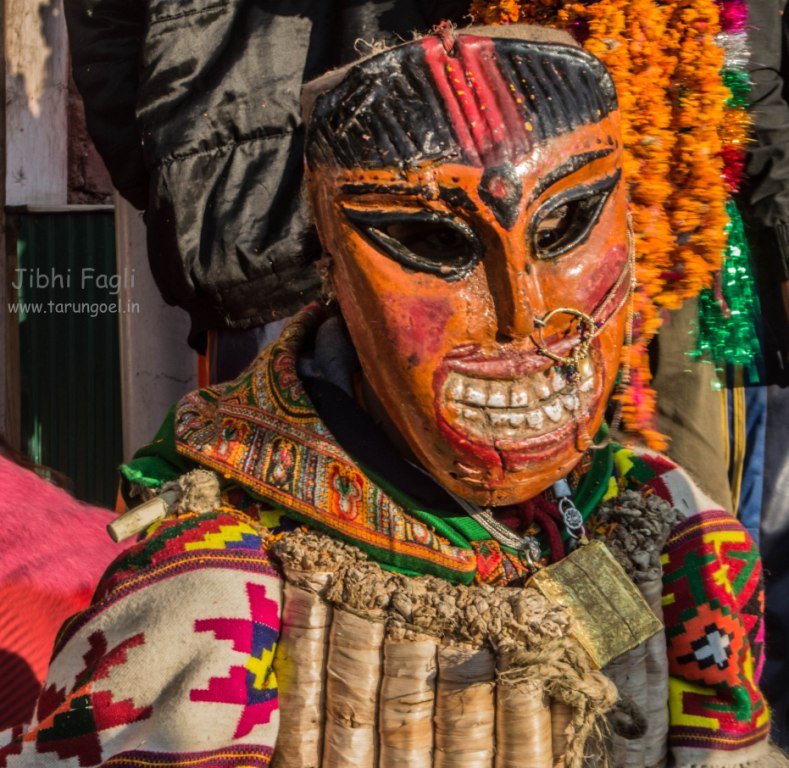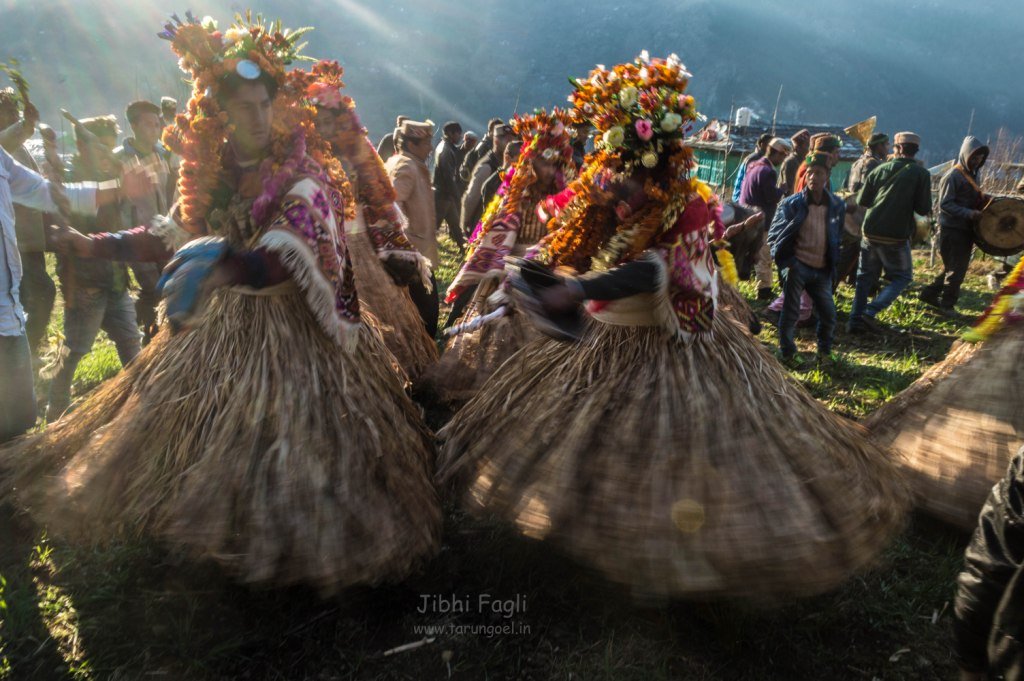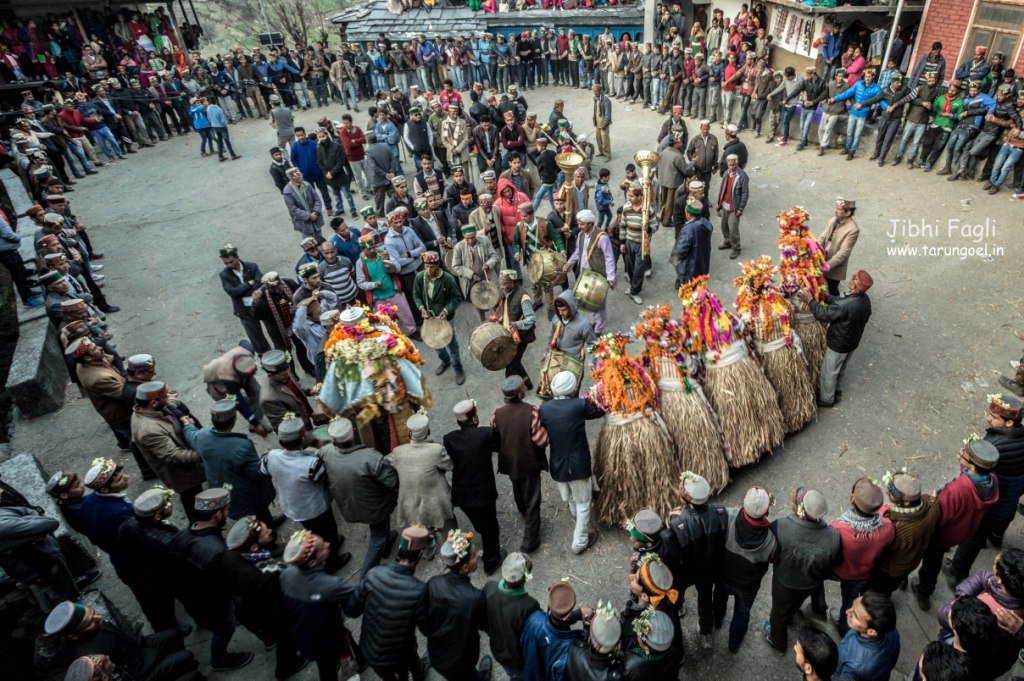Yesterday I was invited for #culturevulture challenge by @paulag. Although there have been some real good posts written by wonderful people of Steemit, I think my little contribution will also add some value to the ongoing trend. So I thought of writing a post that allows you to catch a glimpse of the beautiful yet equally mysterious Himalayan culture wherein people celebrate departure of the winters by putting on masks and dancing all night long.
Goes without saying that drinking is an obvious part of these festivities. The festival is primarily celebrated in the higher Himalays (Kullu, Lahaul) and every village has its own celebration that depends upon the harvest timings of the particular region.
The festival is locally known as Phagli or Fagli.
Fagli (Phagli). The festival when masked men dance all day long and visit homes in the village during nights to share blessings for the upcoming harvest season. Not to mention, unlimited supply of drinks keeps them going while they dance on the psychedelic notes of traditional trumpets and drums for hours and hours.
The dancers represent mythological figures, wear colorful robes and masks as they perform ritualistic dances in every village. The deota (Sri Narayan/Vishnu) dances alongside the masked men in his palanquin and chases away the evil spirits cast by the masked devils. The attire comprises of a decorated head-gear made of flowers, a wooden mask passed on from old generation to the new one, and a hand woven robe (chola) made from locally available grass (shruli).
Like most of other festivals in the mountains, Phagli too can be categorized as a festival purely related to harvest and ‘social networking’ in winters. The winter crops are reaped after Phagli and when your fate is stuck in snow for months, it is time for celebrations.
For women, it is a rest day. They just sit back perched on rooftops and balconies enjoying the fiesta. The buildings are mostly made of wood and stone in traditional architecture. The extended balconies are supported by inclined wooden beams and I can see 52 women seated on one of these balconies. That’s some Civil Engineering I would say!
The dancers are chosen at random by the deota (the local deity, we have 33 million in India). It’s like a lottery system and even if you don’t get to be the dancer, at least one member from the family must be present in the festival. There are penalties for absentees. While every village is done celebrating and dancing, it’s now time for Beeth ceremony.
Beeth is inter-village ceremonial gathering that’s organized between two or more villages alternatively. In simplified terms, Beeth means more dancing and drinking followed by even more dancing and drinking.
Because we were on a time bound schedule, we had to miss out the Beeth ceremony but that’s the good thing about festivals. They keep coming back every year adding color to your life. I’ve heard that the Phagli of Paldi Valley (Thatibir) and Malana are of unparalleled scale so that’s one more reason to visit Banjar.
Overnight, I had traveled from Chandigarh to Mandi with a running nose that probably irritated my co-passenger who accidentally found himself sitting next to me after a young beautiful girl asked him to exchange his seat so that she could sit next to her valentine. Anyhow, having slept for a few hours, soon we were on our way to Jibhi.
The grayish Beas disappeared and greenish Tirthan welcomed us as we cruised along the newly approved National Highway 305. It was a race against time from the word go. Although it has been declared a NH but going by its width, it would be called that only in Liliput. In our world it resembles a narrow alley with the catch that instead of shops on both sides you have vertical mountains and deep gorge on the other side. Lalit wanted us to be there before 1100 Hours and battling against all odds with a war like anxiety we finally reached Jibhi.
We strained our ears for the much anticipated sound of trumpets and drums and scanned the hills to catch a glimpse of the dancing masked men.
A faint sound followed by collective shouting of happy men reached our ears. There they were, dancing in primitive yet beautiful attire, surrounded by hundreds of others waiting for their turn to join the dancing procession. The hillside was dotted with groups of men watching the unique spectacle from their rooftops.
See how we were welcomed in the valley:
The masked men are dancing. Swirling and gyrating, dressed in elaborate robes, meticulously weaved of grass, adorned with garlands and shawls. Their faces hidden behind brightly painted wooden masks. The local deity occupies the center stage. Soon the whole village joins them. The dancing men have their heads covered with caps adorned with nargis flower.


Now enjoy the festival virtually here, we will talk about other Himalayan festivals some other time. I hope you guys will like this post. Tell me in the comment section what do you think about this festival. What type of unique festivals are celebrated in your part of the world.....


All Photographs clicked by me using a Nikon DSLR and Tamron 10--24 lens
